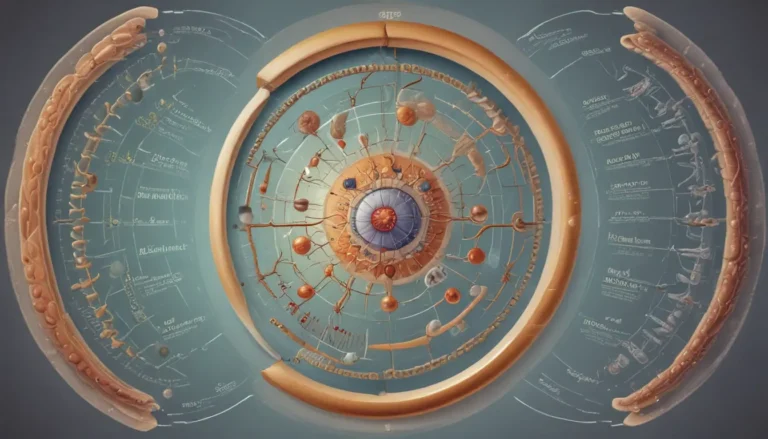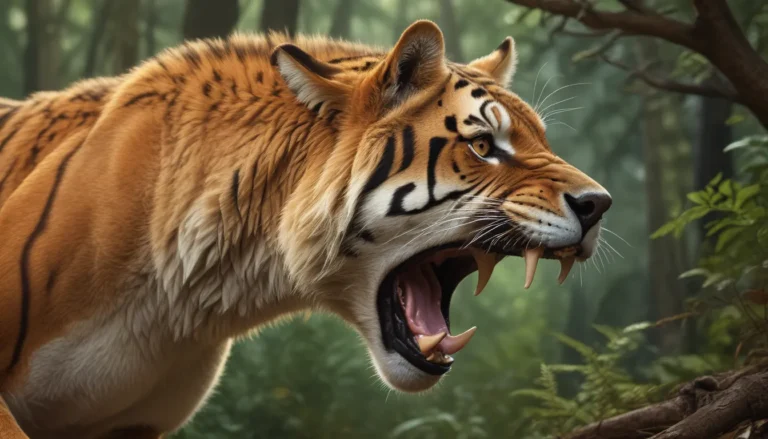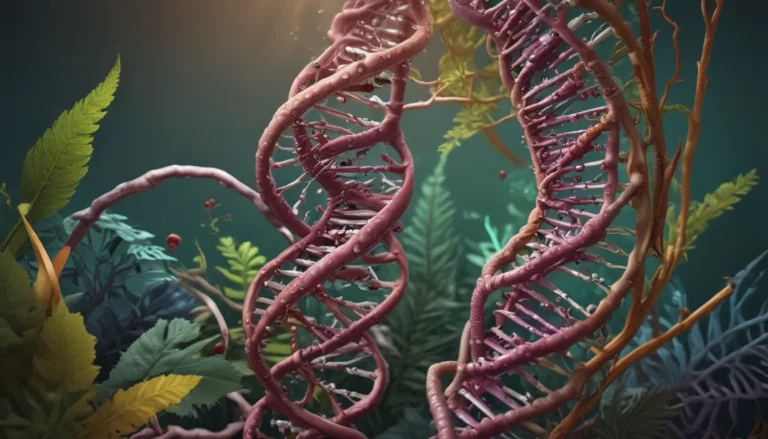A Note About Images: The images used in our articles are for illustration purposes only and may not exactly match the content. They are meant to engage readers, but the text should be relied upon for accurate information.
When we delve into the intricate world of intraspecific interactions, we uncover a realm of captivating dynamics that shape the behavior, ecology, and evolution of various organisms. From competition to cooperation, these interactions between individuals of the same species drive the social structures and survival strategies of a wide array of life forms. In this article, we will unveil 17 mind-blowing facts about intraspecific interactions that shed light on their complexity and significance in the natural world.
Understanding the Essence of Intraspecific Interactions
Intraspecific interactions encompass a spectrum of behaviors, from competition for resources to cooperation for mutual benefit, that occur within a species. These interactions play a pivotal role in guiding evolution, population dynamics, and ecological communities, offering valuable insights into the mechanisms that govern the web of life.
Key Insights Into Intraspecific Interactions
- Intraspecific interactions, such as competition and cooperation, are key drivers of evolution and social structures, influencing the behavior and survival strategies of organisms.
- Understanding intraspecific interactions unravels the intricate ways in which animals communicate, compete, and cooperate within their own species, showcasing the rich tapestry of life’s interactions.
Unveiling the Intriguing Facets of Intraspecific Interactions
Let’s embark on a journey through some fascinating facts that highlight the diverse and remarkable aspects of intraspecific interactions:
- Intraspecific competition fuels evolution: The competition among individuals of the same species for vital resources serves as a catalyst for natural selection, favoring traits that confer a competitive edge.
- Establishment of dominance hierarchies: Many animal species organize themselves into dominance hierarchies, reducing the need for constant conflict and establishing social order within the group.
- Ritualized intraspecific aggression: Aggressive behaviors within the same species, such as territorial disputes, can be ritualized to establish dominance without causing severe harm.
- Cooperative behaviors bolster group survival: Collaborative actions within a species, like hunting in packs or communal parenting, enhance the group’s chances of survival and overall fitness.
- Significance of intraspecific signaling: Animals communicate through a variety of signals, including vocalizations and body postures, to convey essential information about territory, mating opportunities, and dominance.
- Impact of kin recognition: The ability to recognize kin influences behaviors such as mate choice, cooperation, and altruism, promoting the survival and reproduction of relatives.
- Reciprocal altruism in intraspecific cooperation: Individuals engage in reciprocal altruism, aiding others in anticipation of future assistance, fostering beneficial relationships within the species.
Navigating the Complex Social Landscape
Organisms exhibit a myriad of strategies and adaptations to navigate their social environments effectively:
- Territorial defense for critical resources: Securing territories for feeding, breeding, and raising offspring helps individuals acquire essential resources and reduce intra-species competition.
- Occurrence of intraspecific infanticide: In certain species, infanticide by individuals can be observed, driven by factors such as eliminating rivals and asserting dominance.
- Formation of superorganisms through cooperation: Social insect species like ants and bees display high levels of cooperation and division of labor, culminating in the formation of superorganisms.
- Deceptive intraspecific communication: Some species employ deceptive communication tactics, such as mimicking signals or behaviors, to gain advantages in mating or resource acquisition.
The Far-Reaching Impact of Intraspecific Interactions
The effects of intraspecific interactions resonate across various facets of biological systems:
- Influence on population dynamics: The intensity and outcomes of intraspecific interactions directly shape the size, structure, and distribution of populations within a species.
- Complex social structures: Many species exhibit intricate social structures, including dominance hierarchies, cooperative breeding systems, and eusociality, contributing to their survival and reproductive success.
- Determining dispersal patterns: Intraspecific interactions play a pivotal role in dictating the movement and distribution of individuals seeking new resources or breeding partners.
- Impact on reproductive strategies: Conspecific presence and interaction dynamics can prompt changes in mating behaviors, mate choice, and reproductive timing.
- Role in species diversity and coevolution: Intraspecific interactions influence species coexistence and diversity within ecosystems, driving competitive exclusion and coevolutionary processes.
Embracing the Complexity of Nature’s Interactions
From the intricate dance of competition to the harmonious symphony of cooperation, intraspecific interactions illuminate the depths of nature’s intricacies:
As we uncover the mysteries shrouding aggression, territoriality, and mating strategies, we marvel at the diversified ways organisms interact. These interactions not only sculpt individual behaviors but also hold profound implications for species survival, community dynamics, and ecosystem functioning.
The study of intraspecific interactions invites us to ponder the boundless intricacies of life and appreciate the interconnectedness that weaves through nature’s tapestry. As we delve deeper into this captivating world, we unearth an endless array of wonders waiting to be explored and understood.
FAQs: Unveiling the Intriguing World of Intraspecific Interactions
Let’s address some common queries surrounding intraspecific interactions to deepen our understanding:
-
What are intraspecific interactions?
Intraspecific interactions refer to interactions between individuals of the same species, encompassing behaviors like competition, cooperation, mating, and communication. -
Why are intraspecific interactions important?
These interactions are crucial for shaping behavior, adaptations, and survival within a species, with broader implications for community dynamics, evolution, and ecosystem stability. -
Can you provide examples of intraspecific interactions?
Examples include dominance hierarchies in social animals, territorial behavior in birds, cooperative hunting, and communication through vocalizations or visual displays. -
How do intraspecific interactions impact species evolution?
By influencing traits that enhance competition or cooperation, intraspecific interactions contribute to the genetic makeup of populations, guiding species evolution over time. -
What is the significance of intraspecific interactions in community dynamics?
These interactions influence the distribution, abundance, and interactions among individuals within a community, shaping resource competition and predator-prey relationships. -
How do scientists study intraspecific interactions?
Scientists employ various methods, such as field observations, laboratory experiments, genetic analysis, behavioral studies, and modeling, to unravel the complexities of these interactions and their underlying mechanisms.
Embracing the Wonder of Nature’s Interactions
In conclusion, the realm of intraspecific interactions unveils a mosaic of behaviors, strategies, and adaptations that underpin the social dynamics of organisms. From the subtle nuances of communication to the fierce battles for dominance, these interactions showcase the diverse ways in which species navigate their social landscapes.
As we continue to explore the intricate symphony of intraspecific interactions, we are greeted with a rich tapestry of complexities and marvels that define the natural world. Let us embrace the wonders of nature’s interactions, delving deeper into the mysteries that await our discovery and understanding. In the realm of intraspecific interactions, every revelation leads us closer to unlocking the secrets of life’s extraordinary tapestry.






